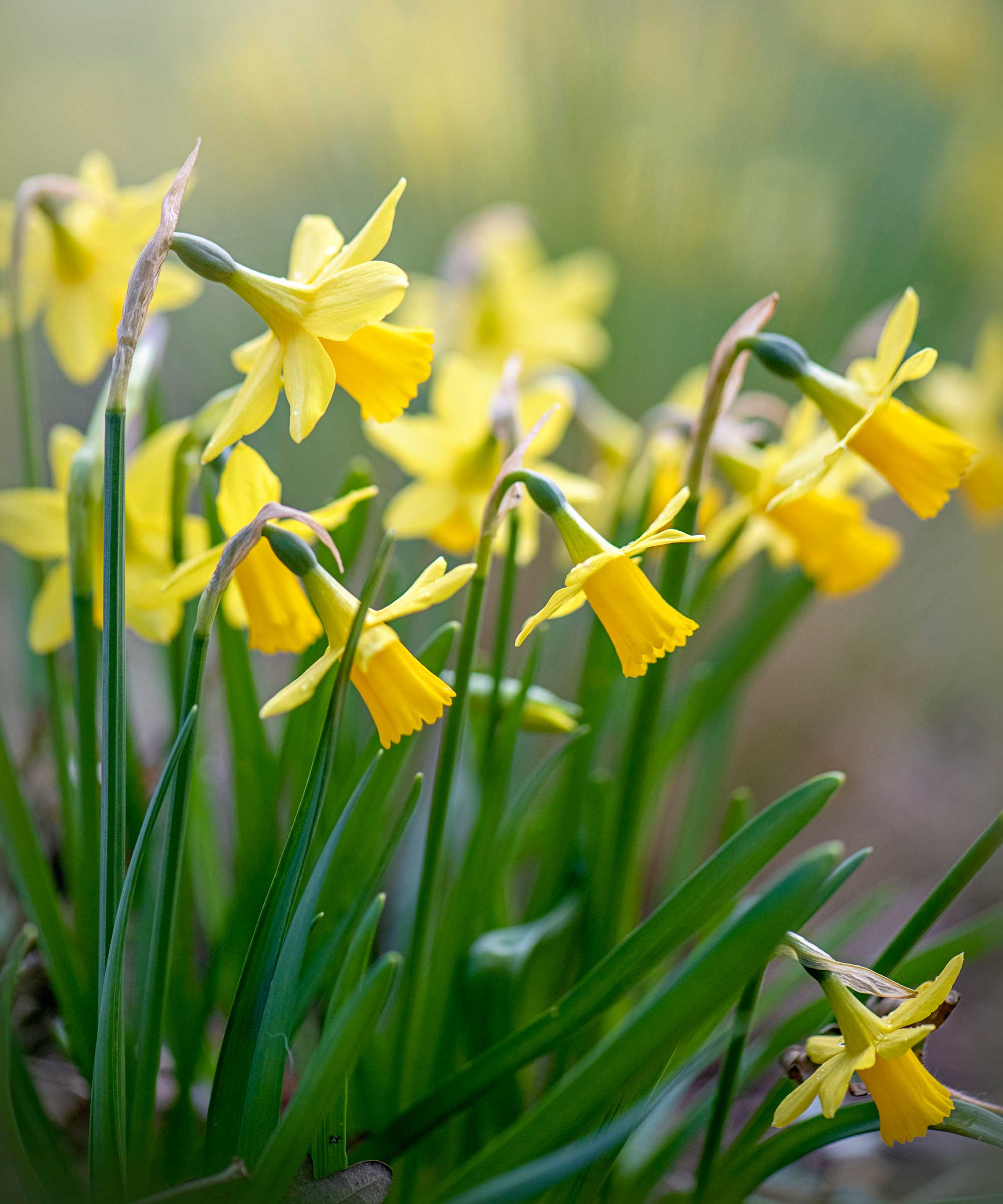Deer-resistant spring bulbs – 5 flowers unlikely to be damaged by deer
Create a dazzling spring display that won't fall prey to hungry deer


For gardeners who live in an area where deer are common, finding new ways to keep garden plants safe from damage is an ongoing task. Although cute to see and observe, it's no secret that deer who are particularly hungry find many bright flowers and foliage tempting to munch on.
The good news is that if you're trying to keep deer away from plants, there are lots of deer-resistant plants to choose from. These are plants that either deer aren't tempted to eat or plants that can handle damage from wildlife and will easily bounce back. Luckily, this means that even if there are lots of deer in your local area, you can create a thriving garden that won't suffer badly from the presence of deer.
When it comes to planning your spring garden, it's important to know which spring bulbs are deer-resistant. But look no further, as I've spoken with garden experts who have chosen their top deer-resistant bulbs.

5 deer-resistant spring bulbs
Just because a plant is labelled as 'deer-resistant' doesn't mean deer won't munch at it, as these beautiful creatures will try to eat just about anything when looking for food. Nevertheless, there are some plants that are less likely to be targeted and will bounce back quickly after being munched on. Here are five deer-resistant bulbs to plant for spring.
1. Daffodils

For many gardeners, daffodils indicate the first sign of spring, as these yellow classics come out as early as February. They can be grown across US hardiness zone 3 to zone 8 and are a great option if you want to deter not only deer, but also rodents, rabbits and other wildlife that may cause damage in your yard.
'Daffodils contain a bitter alkaloid called lycorine, making them unpalatable to deer,' says horticulture and bulb expert Peggy Anne Montgomery. 'With over 30,000 kinds of daffodils, there is a daffodil for every garden, and by planting bulbs that flower in succession, you can enjoy the sunny flowers for months,' she adds.
You can plant daffodil bulbs in fall before the first frost of the season and watch the yellow blooms come out early in the spring season. It's also key to deadhead daffodils once the flowers have become spent and cut daffodils back once the green stems have turned yellow so that they can make a strong return in the following spring.
Design expertise in your inbox – from inspiring decorating ideas and beautiful celebrity homes to practical gardening advice and shopping round-ups.
Explore different daffodil bulbs at Nature Hills.

Peggy Anne Montgomery is a horticultural professional with more than 30 years of US and international experience in garden marketing and communications. An account executive for the Garden Media Group, she currently represents Dutch Royal Anthos, a trade organization for Dutch bulb growers and exporters in the US and Canada.
2. Hyacinths

An excellent choice for those wanting to create impressive spring planters, hyacinths are bell-shaped flowers that come in a wide range of colors, from white, to deep purple, pink and blue.
'Hyacinths produce calcium oxalate, which is toxic at high concentrations for deer,' explains Peggy. 'Hyacinths also have a strong smell that deters deer. That said, hyacinths still manage to produce a delightful perfume for people,' she adds.
It you're keen to create a fragrant garden, try planting hyacinth bulbs to enjoy their soft and floral smell. You can also grow hyacinth bulbs in containers, making them good plants to make your patio smell nice.
Hyacinths can be grown in US hardiness zone 4 to zone 8 and bulbs should be planted in fall. If you want to enjoy them through winter, you can even grow them indoors as one of the best bulbs for Christmas flowering.
Find hyacinth bulbs at Nature Hills to grow at home.
3. Snowdrops

Another early-spring flowerer, and one that often pops up right at the end of the winter season, snowdrops are a classic that have been long-loved by gardeners. There are so many types of snowdrops to grow, each with unique flower shapes and patterns.
'Snowdrops also contain a bitter alkaloid called lycorine, which makes them unpalatable to deer,' says Peggy. 'A true harbinger of spring, snowdrops are one of the first precious flowers to bloom each spring,' she adds.
You can plant snowdrop bulbs in fall and winter, or you can plant snowdrops 'in the green' to encourage bumper blooms - a process of planting bulbs after they have flowered but still with green foliage in mid-to-late-spring.
Snowdrops are hardy across US hardiness zone 3 to zone 7 and are unlikely to be damaged by wandering deer in your yard.
Shop for snowdrops online to plant in fall, like these snowdrop bulbs from Amazon.
4. Glory of the snow

If you look forward to seeing the first spring blooms poke out from the snow, glory of the snow is a must for your spring garden. These star-shaped, blue-purple blooms get their name from the fact that they emerge between March and April when snow is still present in some places.
'Don't let their diminutive size fool you; these low-growing bulbs are powerhouses in deer-resistant design,' says Ben McInerney, a landscape gardener. 'I've employed glory of the snow to create what I call 'protective carpets' beneath deciduous trees and shrubs. In a woodland garden restoration project, we used these bulbs to establish a dense ground cover that not only deterred deer but also suppressed weed growth and provided early spring color,' he adds.
These charming blooms are not appealing to deer and tend to be left alone by them. They're also a good spring flower for part-shade and will grow well as ground cover beneath trees, as Ben notes.
Grow glory of the snow across US hardiness zone 4 to zone 9 with these glory of the snow bulbs from Amazon.

Ben McInerney is a qualified arborist and landscape gardener with over 20 years of industry experience running a commercial lawn mowing and tree services business. He is the founder of GoTreeQuotes, a website that specialises in helping property owners find the best deals on tree removal and trimming.
5. Crown imperial

Among one of the best spring bulbs to plant in fall is crown imperial. This is a type of fritillaria flower that has striking yellow and orange bell-shaped blooms growing on a long stem with tufting foliage.
'With their imposing stature and strong odor, crown imperials are the commanding generals in the deer-resistant army. I've used these striking plants to establish 'deer-free zones' within larger landscapes,' says Ben. 'In a public park project, we created focal points with crown imperials, surrounded by more delicate plantings. The result was a series of protected garden rooms that remained untouched by deer throughout the season,' he adds.
These flowers give off a musky smell that keeps not only deer away, but also repels rodents and other small animals. As Ben mentions, it can be effective to create a resistant border with crown imperial plants - plus, they put on an impressive display when planted en masse.
You can grow crown imperial across US hardiness zone 5 to zone 8 and can find crown imperial bulbs on Amazon.
FAQs
How can I make my yard deer-resistant?
To create an effective deer-resistant backyard, you need to take on board a number of strategies. This means not only opting for deer-resistant bulbs, but also other types of plants and even using things like fencing to keep deer out.
'I've developed a layered approach that combines bulbs with deer-resistant shrubs, trees, and perennials to create a year-round defense system. This strategy not only protects the garden but also creates a dynamic, ever-changing landscape that is a delight to see,' says Ben McInerney, a landscape gardener.
'Deer-resistant bulbs have been a wonderful way for gardeners to enjoy spring bulbs without worry,' says horticulture and bulb expert Peggy Anne Montgomery. Ensuring you have a mix of these deer-resistant bulbs will strengthen the resilience of your yard and allow it to bounce back from any damage caused by deer.
The added bonus is that many of these bulbs are also mouse-repellent plants and squirrel-repellent plants, so will further protect your spring garden from wildlife damage.

Tenielle is a Gardens Content Editor at Homes & Gardens. She holds a qualification in MA Magazine Journalism and has over six years of journalistic experience. Before coming to Homes & Gardens, Tenielle was in the editorial department at the Royal Horticultural Society and worked on The Garden magazine. As our in-house houseplant expert, Tenielle writes on a range of solutions to houseplant problems, as well as other 'how to' guides, inspiring garden projects, and the latest gardening news. When she isn't writing, Tenielle can be found propagating her ever-growing collection of indoor plants, helping others overcome common houseplant pests and diseases, volunteering at a local gardening club, and attending gardening workshops, like a composting masterclass.